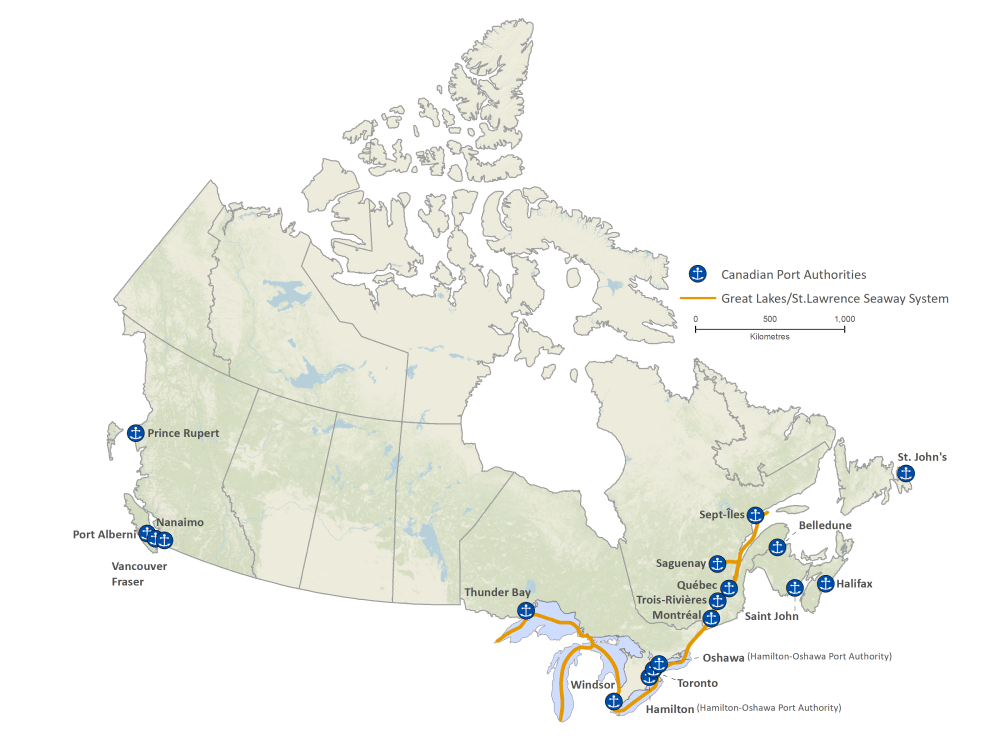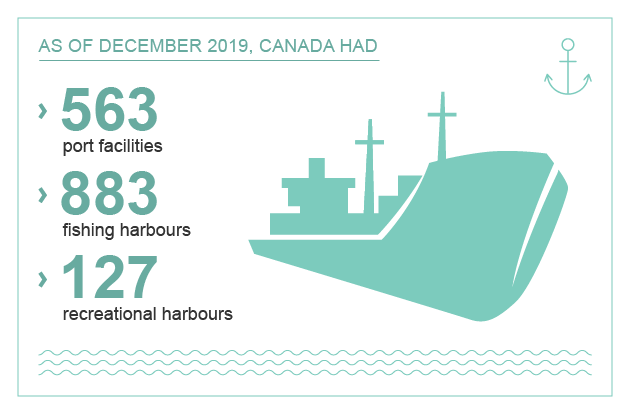Image description - Marine Transportation Network
The map of Canada shows the approximate location of the 17 CPA. Each is represented by an anchor in a blue circle. The CPA ports are (in alphabetical order): Belledune, Halifax, Hamilton-Oshawa, Montréal, Nanaimo, Port Alberni, Prince-Rupert, Québec, Saguenay, Saint John, Sept-Îles, St. John's, Thunder Bay, Toronto, Trois-Rivières, Vancouver Fraser and Windsor. Four of these ports are located in the Atlantic Provinces, five in Québec, four in Ontario and four in British Columbia.
Canadian ports are the main point of exit of Canadian bulk commodities to overseas markets and the main point of entry for imported containerized manufactured goods. Ports are also important hubs, connecting Canadian coast lines to inland domestic and US markets where goods are shipped by railways and trucks.
Transport Canada has a mandate for 2 categories of ports: 17 ports independently managed by Canada Port Authorities, shown on Map 6 in Annex, and 35 port facilities currently owned and operated by Transport Canada.
Canadian registered vessels are active in domestic commercial activities, carrying around 98% of domestic tonnage. Canadian vessels are also active in facilitating trade between Canada and the US In contrast, foreign registered fleets are carrying goods to and from non-US international destinations. The domestic marine sector’s main activity is transporting bulk cargo. This sector is also critical for northern resupply and offshore resource development.
There is a significant diversity within the marine transportation services across Canada served by vessels tailored to serve each market.
Image description - Marine Transportation infographic
As of December 2019, Canada had
- 563 port facilities
- 883 fishing harbours
- 127 recreational harbours
In 2020, Canada’s commercial registered fleet (1,000 gross tonnage and over) had 727 vessels, with a total of 3.7 million gross tonnes.Footnote 1 440 barges were the fleet’s backbone, with 28.1% of total gross tonnage and 60.5% of vessels, followed by cargo vessels (77) and workboats (63). The large active fleet of 440 barges were registered on the Pacific coast.
There are also a number of coastal passenger services across Canada. Ferries in Canada provide an important resupply and transportation link, and play a vital role for coastal and island communities, as well as those separated by river or lake crossings where crossings have no land-based alternative. The members of the Canadian Ferry Association, which includes all major ferry companies in Canada, carry yearly on average more than 53 million passengers and more than 21 million vehicles.

